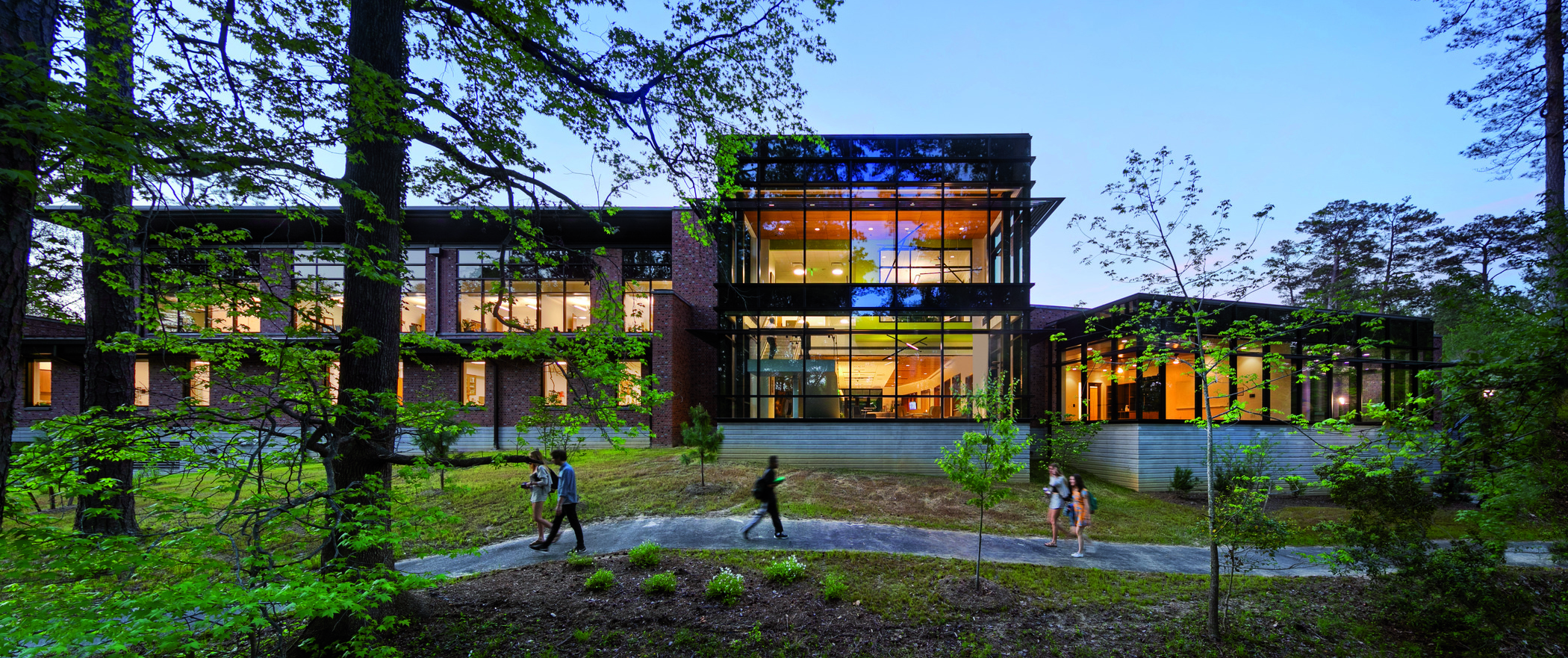
EYP’s design for The College of William & Mary’s McLeod Tyler Wellness Center is intended to be a beacon for health and wellness for the campus community. A safe, inviting, and modern contribution to a campus traditionally influenced by Georgian architecture, the design importantly centralizes and integrates all major wellness facilities and programs.
Deliberately located in a high-traffic area at the center of the campus, the design celebrates the surrounding natural landscape while incorporating natural stone and a variation of the campus’s brick vernacular pattern — paying homage to the College’s traditions. The project site is adjacent to a protected natural woodland with a stream and the scenic Crim Dell. Along with the building’s architectural character, the landscape design was developed in response to the natural setting and the overall result is welcoming and non-institutional.
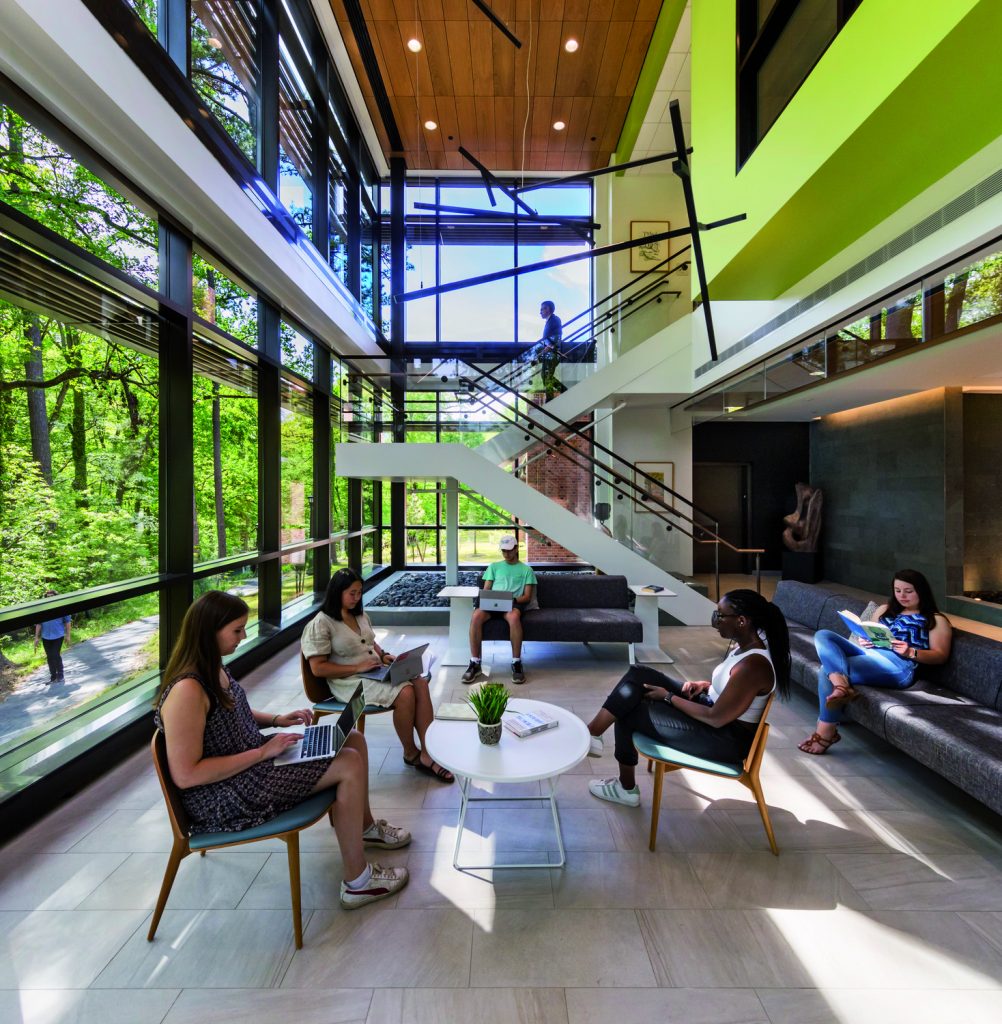
Inspiration for the design concept came from two primary sources: noted architect Philip Johnson’s Glass House and the iconic garage in the movie “Ferris Bueller’s Day Off.” These structures frame and integrate the landscape with the building. Research has proven the positive effects of nature on mental and physical well-being, and the team capitalized on the beauty of the site. In key areas along the south facade, large floor-to-ceiling windows provide expansive views of nature and allow abundant daylight to enter the spaces. The design team incorporated biophilic elements throughout the interior with strategic use of natural patterned fabrics, stone, wood, and a large water feature along a wall in the lobby. Designers also chose a color palette with soothing earth tones to reinforce the Center’s connection to nature and to contribute to the calm, restorative environment.
The building’s windows look out onto the college’s wildflower refuge. Outdoor features include a meditation labyrinth, life-size Zen garden, and social wellness patio equipped with Adirondack chairs. Inspired by the William & Mary’s role in the Charter for Compassionate Schools, a compassion garden with large rocks where students may sit and interact was installed in the front of the building. Several meditation alcoves are also sprinkled throughout the building.

The character and scale of the Center were thoughtfully and collaboratively designed to provide a welcoming presence, incorporating design concepts intended to help change the perception of mental health on campus. In addition to making the services more physically prominent, a primary goal was to shift the campus culture away from a binary view of wellness — sick or well — towards a more holistic understanding.
The physical improvements and strategic design of this integrative facility are clearly making a difference when it comes to students’ use of the building. Students and staff members report that the design and physical environment are bringing students into the Center more frequently than before and for reasons beyond seeing a doctor or counselor. Along with the pleasant aesthetics, students cited the convenience of having all the services and facilities in one space a primary reason for using the new Wellness Center.
The EYP design team learned that certain characteristics applied to the design of these facilities support positive outcomes, including:
- Massing and site design that integrates harmoniously with the campus and natural contexts and provides strong landscape connections;
- Modern, yet grounded, exterior design that engages students and draws them into the building without hesitation;
- A calm and welcoming interior that puts students at ease and promotes health and well-being;
- Design that provides multiple opportunities on the interior and exterior for meditation and reflection and includes positive distractors such as biophilic elements, expansive views to the exterior, and the calming sounds of a water feature;
- A healthcare environment that is comfortable and encourages students to seek medical and counseling help before they are at a crisis stage, with a layout that effectively meets the many operational needs of healthcare personnel; and
- A thoughtful, holistic design that accommodates diverse programs, so students recognize the multiple opportunities to experience integrative wellness.
Designed to be comfortable for students anywhere on the neurodiversity spectrum, the spaces may be used without reservations or the stigma that can often be associated with seeking help.
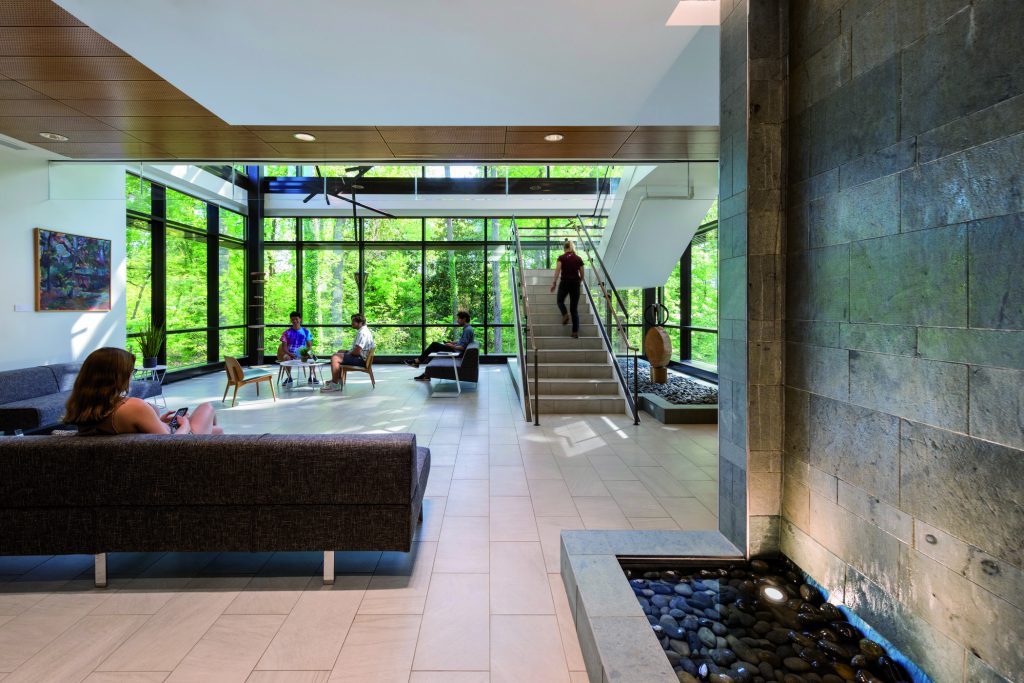
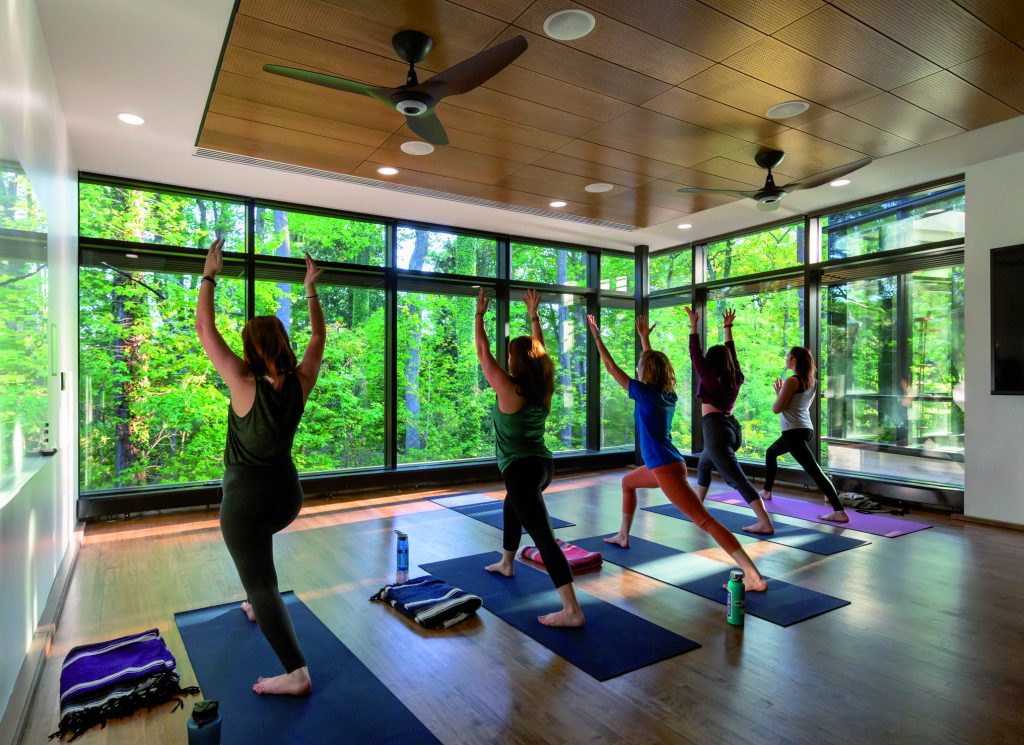
McLeod Tyler Wellness Center, Location: Williamsburg VA, Architect: EYP 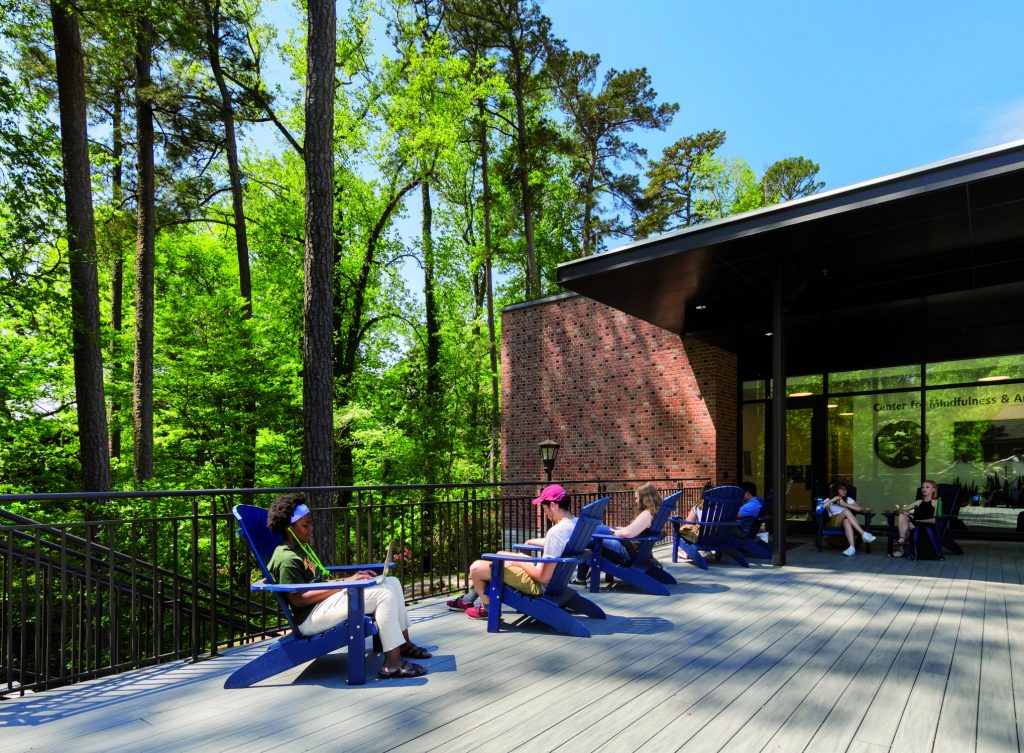
McLeod Tyler Wellness Center, Location: Williamsburg VA, Architect: EYP
